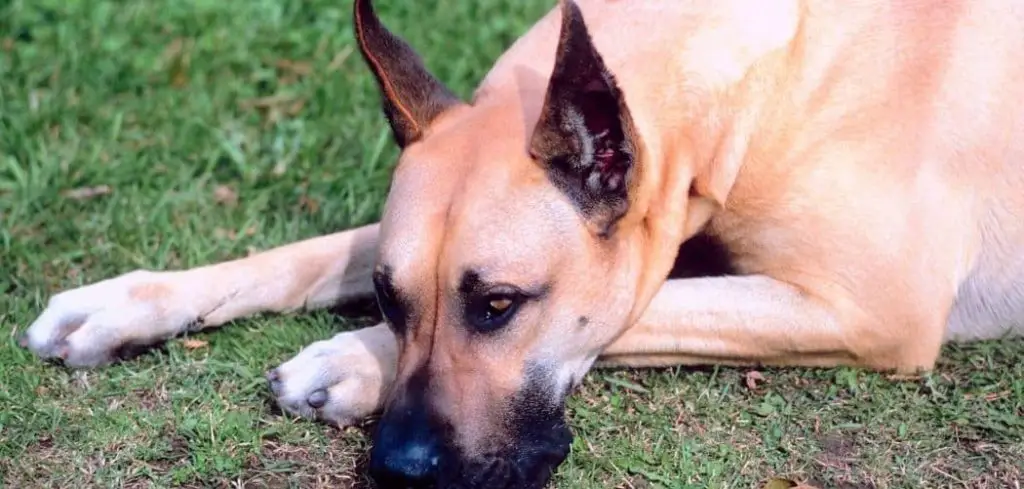When your dog is passing watery diarrhea and refusing to eat, it’s a serious red flag that something is wrong. These two symptoms combined can point to anything from a minor upset stomach to life-threatening conditions like parvovirus or organ failure.
We outline the common causes of a dog pooping water and not eating, what you can do at home, and when to seek veterinary help.
Dog Pooping Water and Not Eating — Why It Happens
Dogs with watery diarrhea and loss of appetite are often battling gastrointestinal irritation, infection, parasites, or more severe underlying issues.
Common causes include viruses like parvo, bacterial infections, internal parasites, toxin ingestion, or inflammatory conditions. In some cases, pancreatitis, liver disease, or even stress can be to blame.
Dehydration is a key risk in all these scenarios and should not be underestimated.

Common Causes of Dog Pooping Water and Not Eating
Parvovirus
Parvovirus is a deadly and highly contagious virus that primarily affects unvaccinated puppies and young dogs.
It attacks rapidly dividing cells in the gastrointestinal tract, leading to severe, foul-smelling watery diarrhea, vomiting, and total loss of appetite.
You may also notice lethargy, fever, and bloody stool.
Parvo requires emergency veterinary care and aggressive treatment to give your dog the best chance at survival.
Intestinal Parasites
Worms, protozoa, and other intestinal parasites can cause significant digestive upset in dogs.
Common parasites like hookworms, giardia, or whipworms may lead to watery diarrhea, bloating, and a lack of interest in food.
Parasites are more common in puppies, shelter dogs, and those who spend time outdoors or around fecal contamination.
Left untreated, they can cause malnutrition, dehydration, and long-term gut damage.
Bacterial or Viral Infections
Infections such as salmonella, campylobacter, or canine coronavirus can trigger inflammation in your dog’s digestive system.
These infections are often picked up from contaminated food, water, or other animals and can cause symptoms like watery stool, vomiting, fever, and appetite loss.
Dogs with weakened immune systems are particularly at risk of developing complications.
Read more: Dog Not Eating and Drinking a Lot of Water (Is it serious or just dehydration?)
Toxin Ingestion
Dogs that ingest spoiled food, human medications, household cleaners, or toxic plants may develop acute gastrointestinal upset.
Toxins irritate the gut lining, causing sudden-onset watery diarrhea and nausea that make your dog refuse to eat.
This can progress rapidly to dehydration and systemic toxicity depending on the substance consumed.
If you suspect poisoning, contact your vet or an animal poison control center immediately.
Pancreatitis
Pancreatitis is inflammation of the pancreas and is especially common in dogs who consume fatty human foods.
It causes abdominal pain, vomiting, watery diarrhea, and total appetite loss.
Your dog may also appear lethargic, hunched, or uncomfortable.
Pancreatitis can be mild or severe, and repeated episodes may cause long-term digestive damage.
Stress or Sudden Diet Changes
Sometimes stress, anxiety, or abrupt changes in diet can disrupt your dog’s gut bacteria, leading to temporary watery diarrhea and refusal to eat.
This is common in newly adopted dogs, boarding situations, or after switching kibble too quickly.
Though usually less dangerous, these situations can still lead to dehydration if symptoms persist for more than a day.
What to Do If Your Dog Is Pooping Water and Not Eating
First, remove all food for 12–24 hours to let your dog’s stomach settle, but continue offering fresh water or electrolyte solutions frequently.
If your dog is drinking, monitor hydration by checking for gum moisture or skin elasticity. If not drinking, they need vet care urgently.
After the fasting period, offer a bland diet such as boiled chicken and plain white rice in small portions to see if appetite returns.
If your dog begins eating and diarrhea improves, you can gradually reintroduce regular food over the next few days.
Always isolate your dog from other pets until you determine the cause, especially if infection is suspected.
When to Call or Visit Your Vet
If your dog has watery diarrhea and won’t eat for more than 24 hours, it’s time to involve your vet.
Call sooner if you notice any of the following:
Blood in the diarrhea
Vomiting along with diarrhea
Lethargy or collapse
Signs of dehydration (dry gums, sunken eyes, no urination)
Puppy, senior, or immunocompromised dog
Known exposure to toxins or unvaccinated status
Watery diarrhea can cause life-threatening fluid loss, and fast treatment can make a big difference in recovery.
Key Takeaway
If your dog is pooping water and not eating, treat it as a medical concern — especially if symptoms persist beyond 24 hours.
Rule out exposure to viruses, parasites, or toxins, and don’t delay a vet visit if your dog seems lethargic, dehydrated, or in pain.
With prompt care, most dogs can recover fully from digestive issues, but your fast response could be life-saving in more serious cases.
